
10 Frames Per Second
10 Frames Per Second
A weekly podcast exploring topics of photojournalism through the eyes of working photojournalists. Aiming to go beyond tech talk, 10FPS focuses on the heart of photojournalism: why and how we do what we do. Each week we will feature a new guest from the field and ask what drives them.
- 50 minutes 13 secondsEpisode 132: Jason Gardner (Documentary Photography)
In the vibrant world of photojournalism, few subjects evoke as much passion and energy as the celebration of carnival. This lively festival, rich in culture and tradition, has captivated photographers and audiences alike. In a recent episode of the podcast “10 Frames Per Second,” hosts Joe Giordano and Molly Roberts welcomed Jason Gardner, a talented photographer whose work focuses on capturing the essence of carnival. Through his experiences and insights, Gardner sheds light on the intricate relationship between photography, culture, and storytelling.
The Journey Begins
Jason Gardner’s journey into photography is as colorful as the festivals he captures. His initial foray into the world of photography was sparked by a series of backpacking trips across the globe, including the Middle East, Southeast Asia, and Australia. These adventures not only broadened his horizons but also ignited a passion for storytelling through images. Gardner’s experiences during these travels laid the groundwork for his future projects, allowing him to explore diverse cultures and their unique celebrations.
One pivotal moment in Gardner’s career was his involvement in a book project Here’s New York related to September 11th. This experience opened his eyes to the power of photography as a medium for conveying emotions and narratives. It was a turning point that solidified his commitment to pursuing photography as a profession.
In 2013, Jason published A Flower in the Mouth, a photobook about the culture, music and rituals of Carnaval in Pernambuco, Brazil (Visual Anthropology Press, USA).
The Carnival Experience
Over 15 years and 15 countries, Gardner’s work revolved around the carnival, a festival that embodies the spirit of community, creativity, and tradition. He emphasizes the importance of capturing not just the visual spectacle but also the underlying emotions and stories that define these events. His incredible book project, titled “We the Spirits,” reflects this philosophy, aiming to delve deeper into the themes of life, death, and the human experience.
During the podcast, Gardner discussed the improvisational nature of carnival celebrations. While there are traditional characters and structures, the spontaneity of the events allows for a unique blend of chaos and order. This dynamic environment presents both challenges and opportunities for photographers. Gardner’s approach involves embracing this unpredictability, allowing him to capture authentic moments that resonate with viewers.
The Power of Multiple Mediums
In today’s digital age, the ability to convey a story through various mediums is invaluable. Gardner recognizes this and incorporates video into his work, complementing his still photography. He explained how motion and sound can enhance the viewer’s understanding of the carnival experience, providing context that still images alone cannot convey. By creating short video clips alongside his photographs, Gardner offers a more immersive experience for his audience.
He also emphasizes the importance of captions and written narratives in his projects. By including quotes from participants and contextual information, Gardner enriches the viewer’s understanding of the cultural significance behind the images. This multi-faceted approach not only elevates his work but also engages the audience on a deeper level.
Jason Gardner’s journey through the world of carnival photography is a testament to the power of storytelling through images. His dedication to capturing the spirit of these celebrations, combined with his innovative approach to content creation, sets him apart in the field of photojournalism.
#photography #cycleoflife #storytelling #humanexperience #carnival #photojournalism #10fps
Previous Episode: Sandra Stevenson Next Episode: Ashly Stohl
The post Episode 132: Jason Gardner (Documentary Photography) first appeared on A Photojournalism Podcast for Everyone.
22 January 2025, 2:10 am - 56 minutes 13 secondsEpisode 131: Sandra Stevenson (Photo Editor)
In our recent discussion with Sandra Stevenson, Deputy Director of Photography at the Washington Post, we explored the evolving landscape of photography in journalism and storytelling. We covered everything from trends in political photography to the future of the professional freelance photographer. Topics included the use of AI, the evolution of media and how people consume their news and how the mainstream media might fare under a Trump White House.
Here are three key takeaways that every visual storyteller should consider:
– **The Power of Visuals**: Photography and video have the unique ability to capture emotions and events in ways that words cannot. As Sandra highlighted, witnessing moments unfold through visuals can create a deeper connection with the audience.
– **Adapting to New Platforms**: With the rise of mobile and social media, particularly Instagram, photographers must think beyond traditional storytelling. Consider how your work will be presented digitally and how it can engage audiences across various platforms.
– **Ethics and Authenticity**: As technology evolves, so do the challenges in maintaining ethical standards in photography. It’s crucial for photographers and editors to stay informed about best practices and the implications of tools like AI and Photoshop on the integrity of visual storytelling.
Join us in embracing these insights to enhance our craft and connect more meaningfully with our audiences!
#Photography #VisualStorytelling #Journalism #Ethics #SocialMedia #10FramesPerSecond
Previous Episode: Latoya Ruby Frazier Next Episode: Best Photobooks of 2024
The post Episode 131: Sandra Stevenson (Photo Editor) first appeared on A Photojournalism Podcast for Everyone.
14 January 2025, 11:03 pm - 56 minutes 36 secondsEpisode 130: Best Photo Books of 2024

Our hosts pick their Top 10 best photo books of the year 2024: Insights from the 10 Frames per Second Podcast
Introduction
In the world of photojournalism, the power of storytelling through images cannot be overstated. The recent episode of the podcast “10 Frames per Second,” hosted by Joe Giordano and Molly Roberts, delves into the intricate process of creating photo books and how they selected their Top 10 Best Photo Books of the Year 2024. With a focus on the challenges and triumphs faced by photographers and editors alike, this episode offers valuable insights for anyone interested in the art of visual storytelling. Whether you’re a seasoned professional or an aspiring photographer, understanding the nuances of photo book creation can elevate your work and connect you with your audience in profound ways.
- Curation and Selection: The importance of carefully selecting and curating images to tell a compelling story in photo books.
- Social Responsibility: The role of photojournalists in documenting significant social issues, such as the lives of migrant workers and the impact of agriculture.
- Archival Work: The resurgence of archival photography and its potential to create new narratives by reinterpreting historical images.
- Structure and Narrative: The necessity of having a clear vision and structure to avoid disjointed storytelling in photo books.
- Community Support: The significance of supporting fellow artists and the photo book community to ensure the medium’s survival.
- Innovation and Creativity: The need for innovation in the photo book landscape, especially in response to evolving technology and digital media.
- Authenticity and Emotional Depth: The challenge of maintaining authenticity and emotional resonance in photo books amidst the rise of artificial intelligence and digital content.
The Journey of Creating a Photo Book
Molly Roberts shares her experience of starting with a vast collection of images—200, to be precise—before narrowing it down to a select few for a photo book. This process highlights a crucial aspect of photojournalism: the importance of curation. As Molly points out, the challenge lies not only in selecting the right images but also in structuring them to tell a compelling story. This is particularly vital when working on projects that aim to shed light on significant social issues, such as the lives of migrant workers on farms. The question arises: how can we feed the world without the contributions of these essential workers? This theme of social responsibility resonates throughout the podcast, emphasizing the role of photojournalists in documenting and advocating for change.
Joe Giordano and Molly discuss the evolving landscape of photo books, particularly the resurgence of archival work. This trend involves reinterpreting historical photographs, often with open copyrights, to create new narratives. By taking a fresh look at these images, photographers can juxtapose them in ways that provoke thought and evoke emotion. This creative approach not only honors the past but also invites contemporary audiences to engage with history in a meaningful way.
Common Pitfalls in Photo Book Creation
As the conversation unfolds, Molly shares some common mistakes that photographers make when assembling their photo books. One of the key takeaways is the importance of having a clear vision and structure from the outset. Without a solid framework, the narrative can become disjointed, leaving readers confused about the story being told. This insight serves as a reminder that successful photo books are not just collections of images; they are carefully crafted narratives that guide the viewer through a visual journey.
The hosts also touch on the significance of supporting fellow artists in the photo book community. Molly recalls her advice to students who aspired to see their work published in magazines: if you love photo books, you must support them by purchasing and promoting the work of others. This sense of community is vital for the survival of the medium, especially in an age where digital content often overshadows traditional print.
The Future of Photo Books
As the episode wraps up, the hosts express their excitement for upcoming projects and the potential for new voices in the photo book landscape. They discuss the importance of innovation and creativity in this field, particularly as technology continues to evolve. With the rise of artificial intelligence and digital media, the challenge for photographers will be to maintain the authenticity and emotional depth that physical photo books can offer.
Conclusion
The “10 Frames per Second” podcast provides a fascinating glimpse into the world of photo books, highlighting the dedication and artistry that goes into creating them. From the initial curation of images to the final publication, the journey is filled with challenges and opportunities for growth. As Joe Giordano and Molly Roberts emphasize, the key to a successful photo book lies in storytelling, structure, and community support. For anyone passionate about photography, this episode serves as a reminder of the power of images to inspire, inform, and connect us all. So, whether you’re an aspiring photographer or a seasoned pro, take the time to explore the world of photo books and support your fellow artists in their creative endeavors.
Molly Roberts 2024 Best Photo Books:
My America by Diana Matar (10FPS Episode 119)
Manifest, Thirteen Colonies by Wendel White (10FPS Episode 104)
Sons of the Living by Bryan Schutmaat
American Artifacts by Matt Black
Light in the Underworld by Martin Broen (10FPS Episode 125)
We the Spirits by Jason Gardner
A Difficulty is a Light by Rebecca Norris Webb
Feed the Planet by George Steinmetz (10FPS Episode 127)
Works in Progress by Peter Essick (10FPS Episode 123)
J.M. Joe Giordano’s Top 10 Photo Books of 2024:
Gloryland by Robert LeBlanc (10FPS Episode 122)
The History War by Larry Towell
Instant Radicals by Andrae Steed
Omen Phantasmagoria at the FSA Archive – Edited by León Muñoz Santini, Jorge Panchoaga. Text by Lucy Ives
Nowhere New York by Julia Gorton (10FPS Episode 112)
American Artifacts by Matt Black
White Fence by Graciella Iturbide
Previous Episode: Jason Gardner Next Episode: Sharun Huang
The post Episode 130: Best Photo Books of 2024 first appeared on A Photojournalism Podcast for Everyone.
1 January 2025, 5:09 pm - 1 hour 1 minuteEpisode 129: LaToya Ruby Frazier (Documentary Photography)
Exploring Social Justice Through Photography: A Conversation with LaToya Ruby Frazier
Welcome to the 10 Frames Per Second podcast, where photojournalism meets social advocacy. Hosted by Joe Giordano and Molly Roberts, this podcast dives deep into the world of photography and its role in addressing social issues. In this episode, we are honored to have LaToya Ruby Frazier, a renowned photographer and social justice advocate, as our guest.
LaToya Ruby Frazier: A Journey Through Photography
LaToya Ruby Frazier began her photography journey at the age of 16, capturing her family and community in Braddock, Pennsylvania. Inspired by legendary photographers like Walker Evans, Dorothea Lange, and Gordon Parks, Frazier has dedicated her work to documenting the social and environmental injustices faced by her community. Thus far she has produced 5 books.
Achievements and Recognition, Frazier’s impressive accolades include:
Guggenheim Fellow
International Center of Photography Award
MacArthur Fellowship
Sundance Institute’s Art of Nonfiction Fellow (2018)
Gordon Parks Foundation Stidel Book Prize (2020)
Honorary Fellowship with the Royal Photographic Society (2021)
The Power of Photography in Social JusticeLaToya’s work is rooted in her personal experiences growing up in a post-industrial town. She uses her camera as a tool to create a narrative that challenges the dominant media portrayal of communities like hers.
Key Themes in LaToya’s Work
Social and Environmental Contexts: Frazier’s photography encapsulates the struggles of living in a dilapidated environment, where systemic issues like housing discrimination and pollution are prevalent.
Historic Erasure: A pivotal moment in her career was discovering the book Images of America: Braddock, Allegheny County, which omitted the stories of African Americans. This realization fueled her commitment to document her community’s narrative.
Counter-Narratives: LaToya aims to provide a counter-narrative to the mainstream media’s portrayal of her hometown, emphasizing the humanity and resilience of its residents.
Documenting the Water Crisis: A New Narrative
In our discussion, LaToya delves into the water crisis affecting communities across America, particularly in Flint, Michigan. Her work highlights the systemic problems that lead to contaminated water, drawing attention to the urgent need for clean drinking water.
The Importance of Visual Storytelling
Impactful Imagery: LaToya emphasizes how powerful images can raise awareness about social issues. For instance, witnessing water fountains covered with signs declaring “contaminated, do not drink” left a lasting impression on her, pushing her to create a photo essay that would reach millions.
Long-Term Engagement: She believes that documentary work should have a sustained life, urging artists to continue their engagement with communities long after initial projects are complete.
Collaborative Efforts in Crisis
LaToya highlights the importance of collaboration in addressing social issues:
Community Connections: Through her relationships with activists like Shay Cobb and Amber Hassan, she documents their struggles and triumphs in navigating the water crisis.
Innovative Solutions: The introduction of Moses West’s atmospheric water generator technology in Flint represents a beacon of hope. LaToya’s work showcases how grassroots activism can lead to transformative solutions.
The Role of Community Health Workers
In her recent project, LaToya shifts focus to community health workers in Baltimore, highlighting their critical role during the COVID-19 pandemic.
Celebrating Unsung Heroes
More Than Conquerors: This project aims to honor community health workers, often overlooked despite their invaluable contributions. LaToya’s portraits serve as a monument to their dedication and resilience.
Advocacy for Change: By documenting their stories, LaToya advocates for better recognition and support for these workers, pushing for policy changes that ensure fair compensation and benefits.
A Permanent Home for Art
In an exciting development, LaToya’s work has found a permanent home at the Baltimore Museum of Art (BMA). Glenstone has gifted a significant monument to the BMA, ensuring that LaToya’s impactful art will be preserved for future generations. This gift symbolizes a commitment to the people of Baltimore, allowing them to engage with and draw inspiration from her work.
Inspiring Future Generations
LaToya’s presence in the BMA is not just a personal achievement; it serves as an inspiration for young artists in Baltimore and beyond. As educators like Joe Giordano prepare their students to experience LaToya’s work, the impact of her art continues to ripple through the community.
Conclusion: The Role of Artists in Social Change
LaToya Ruby Frazier’s work exemplifies the power of photography in advocating for social justice. By documenting her community’s struggles and triumphs, she not only preserves their narratives but also inspires others to engage in meaningful conversations about equity and representation.
Key Takeaways
Photography can serve as a powerful tool for social change.
Collaborative efforts between artists and communities are essential for authentic representation.
Understanding the complexities of systemic issues, like the water crisis and health disparities, is crucial for creating inclusive solutions.
Join us every Tuesday on 10FPS for more insightful conversations about the intersection of photography and social justice. You can catch past episodes on WLOY.org and stay tuned for more inspiring stories from photographers like LaToya Ruby Frazier.Previous Episode: Kevin Painchaud Next Episode: Jason Gardner
The post Episode 129: LaToya Ruby Frazier (Documentary Photography) first appeared on A Photojournalism Podcast for Everyone.
10 December 2024, 10:49 pm - 54 minutes 3 secondsEpisode 128: Kevin Painchaud (Breaking News Photography)
The Power of Photojournalism: A Conversation with Pulitzer Prize winner Kevin Painchaud of Lookout Santa Cruz
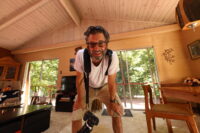
Welcome back to 10 Frames Per Second, the podcast dedicated to the world of photojournalism, hosted by Joe Giordano and Molly Roberts. Each Tuesday, we explore the stories behind the lens with professional photojournalists. In our latest episode, we had the pleasure of hosting Kevin Painchaud, a distinguished photojournalist from Lookout Santa Cruz, whose impactful work has recently earned him and his team a Pulitzer Prize for breaking news and him a Photo of the Year.
Kevin is not just a photojournalist; he is a storyteller who captures the essence of human experiences through his lens. With accolades including the California Journalism Awards’ News Photo of the Year and an Emmy nomination, Kevin’s work has graced the pages of major news outlets such as ABC, CBS, and CNN. His journey into photography began in his youth, sparked by a passion for skateboarding and the captivating black-and-white images taken by a friend.
From Accident to Awakening
Kevin’s love for photography took a transformative turn after a serious car accident during his sophomore year of high school. The experience left him in a coma for four days, but it also gave him a renewed perspective on life and photography.
A Shift in Perspective: After waking up, Kevin felt an overwhelming gratitude for life and a newfound empathy for others. This experience changed how he approached photography, allowing him to see people not as strangers but as individuals with unique stories.
Engaging with Subjects: Kevin emphasizes the importance of building rapport with his subjects. By showing genuine interest in their lives, he creates a trust that allows him to capture authentic moments through his camera.
The Role of Photojournalism in Community Reporting
Kevin’s work at Lookout Santa Cruz has been pivotal, especially during challenging times for the community. The organization, which operates with a small team of reporters and editors, focuses on delivering local news that resonates with its audience.
Covering Extreme Weather Events
In early 2023, Santa Cruz faced extreme weather conditions that tested the resilience of its residents and the dedication of its news team. Here’s how Kevin and his colleagues rose to the occasion:
Team Dynamics: Lookout Santa Cruz consists of six reporters, three editors, and Kevin as the sole photojournalist. This tight-knit group worked collaboratively to cover the devastating storms that hit the area, causing significant damage and disruption.
Community Connection: The team’s commitment to providing accurate and timely information was crucial for residents who were scared and uncertain about the unfolding events. Kevin’s on-the-ground reporting helped bridge the gap between the community and the information they desperately needed.
The Impact of Local Journalism
Kevin highlighted the importance of local journalism, especially in times of crisis. The community relied on Lookout Santa Cruz for updates, and the team’s dedication to their work played a significant role in their Pulitzer Prize-winning coverage.
Real-Time Reporting: Kevin often took on the dual role of photographer and reporter, capturing images and conducting interviews simultaneously. This hands-on approach ensured that the stories being told were not only accurate but also deeply connected to the community’s experiences.
A Sense of Duty: Despite the exhausting demands of working through the storms for three months, Kevin and his team felt an obligation to their community. They worked tirelessly, often putting in 12-hour days, to ensure that residents were kept informed and supported during the crisis.
The Journey to the Pulitzer Prize
The culmination of Kevin’s hard work and dedication came when Lookout Santa Cruz was awarded the Pulitzer Prize for breaking news coverage. The announcement was unexpected, and the emotions that followed were profound.
A Surprising Announcement: Kevin’s managing editor, Tamsin, had secretly submitted their work for the Pulitzer without informing the team. When she announced the news during a mandatory meeting, the initial reaction was disbelief, quickly followed by tears of joy and celebration.
A Personal Triumph: For Kevin, winning the Pulitzer was not just a professional milestone; it was a deeply emotional experience that validated his journey as a photojournalist. It reaffirmed that his work mattered and had a significant impact on the community.
The Emotional Weight of Photojournalism
Kevin discussed the emotional challenges faced by photojournalists, particularly when witnessing trauma and hardship in the communities they cover. He reflected on how the Pulitzer win served as a cathartic moment, allowing him to confront his own insecurities and affirm the importance of his work.
The Constant Struggle: Despite the accolades, Kevin acknowledged the ongoing struggle many photojournalists face regarding the value of their work. The profession is evolving, and the pressure to prove the significance of visual storytelling remains.
Finding Purpose: Winning the Pulitzer Prize reinforced Kevin’s belief that photojournalism is vital. It demonstrated that even small, community-focused news outlets can make a difference and be recognized for their efforts.
Conclusion: The Heart of Photojournalism
Kevin Painchaud’s journey and experiences serve as a powerful reminder of the impact that photojournalism can have on communities. Through empathy, dedication, and a passion for storytelling, photojournalists like Kevin help us understand the world around us better.
To hear more about Kevin’s story and the incredible work of Lookout Santa Cruz, listen to the full episode of 10 Frames Per Second on 10FPS.net or wherever you get your podcasts.
Stay Connected
For more insights into the world of photojournalism, subscribe to our podcast and join us each week for new episodes. Don’t forget to check out our previous episodes at WLOY.org, where you can explore the stories of other talented photojournalists.
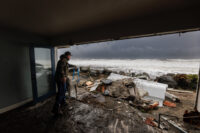
Previous Episode: George Steinmetz Next Episode: Latoya Ruby Frazier
The post Episode 128: Kevin Painchaud (Breaking News Photography) first appeared on A Photojournalism Podcast for Everyone.
5 December 2024, 3:37 am - 48 minutesEpisode 127: George Steinmetz (Documentary Photography)
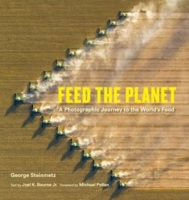
Exploring the World of Aerial Photojournalism: An Interview with George Steinmetz
Welcome back to 10 Frames Per Second, the podcast dedicated to photojournalism, hosted by Joe Giordano and Molly Roberts. In this episode, we had the privilege of speaking with renowned photographer George Steinmetz, who has spent decades capturing the beauty and challenges of our planet from unique perspectives.
Meet George Steinmetz
George Steinmetz graduated from Stanford University with a degree in geophysics and embarked on a remarkable journey into photography after hitchhiking through Africa for 28 months. His adventures have taken him to remote deserts around the globe, often piloting a motorized paraglider to capture stunning aerial shots.
Aerial Photography and Adventure
Steinmetz’s approach to photography is akin to modern drone photography, but with a twist: he actually flies in his unique contraption, which he humorously describes as a “motorized lawn chair.” This adventurous spirit has led to some unexpected and thrilling experiences.
- Unique Perspective: George’s aerial photography allows him to tell compelling stories about remote landscapes, climate change, and food sustainability.
- Published Work: Since 1986, he has completed over 40 major photo essays for National Geographic and published six books, including his latest, Feed the Planet: A Photographic Journey to the World’s Food, released in October.
The Journey into Photography
From Geophysics to Photography: George’s journey into photography was driven by curiosity and a desire to explore the unknown. Growing up in Los Angeles and attending Stanford, he longed for a different experience, leading him to Africa.
- Self-Taught Photographer: Despite being self-taught, George’s passion for photography grew as he traveled, capturing moments and learning through trial and error.
- First Camera: His first camera was an Olympus OM-1, borrowed from a friend, which he used during his travels in Africa.
Overcoming Challenges: Steinmetz faced numerous challenges while learning photography:
- Learning Curve: He made many mistakes, sending photos back to his mother for feedback, which provided him with valuable lessons.
- Film Photography: Shooting with Kodachrome 64 and Ektachrome, he learned the importance of exposure, lighting, and composition.
The Art of Aerial Photography
The Motorized Paraglider: George’s transition to aerial photography began with his motorized paraglider, which he began flying in the late 1990s. This innovative flying machine allowed him to capture breathtaking landscapes from above.
- Flight Experience: He learned to fly and navigate the challenges of aerial photography, often facing mechanical issues and unpredictable weather conditions.
- Safety First: George emphasized the importance of safety, always flying with a pro pilot and having contingency plans in place.
Techniques and Equipment: Steinmetz shared insights into his photographic techniques:
- Camera Settings: He typically shot at 1/500 of a second with ISO 40 film, adjusting settings based on lighting conditions.
- Focus Tricks: To counteract vibration during flight, he would tape his focus settings to ensure sharp images.
Sustainability and Food Choices
In our conversation, George also delved into the critical issue of sustainability in food production. He discussed how the perception of certain fish species has changed over time, leading to shifts in dietary choices.
The Evolution of Fish Consumption: Overfishing and overconsumption threatens many fish populations.- From Junk Fish to Delicacies: George reminisced about the transformation of once-overlooked fish, like used in a fast-food fish sandwich, into popular menu items, thanks to creative cooking methods.
- Overfishing Concerns: He highlighted the alarming decline of species like swordfish and Atlantic tuna, prompting a need to rethink our seafood choices.
Personal Dietary Changes: George shared how his extensive research has influenced his own eating habits:
- Local and Sustainable Choices: He now strives to buy locally sourced foods and prefers chicken over red meats when he does consume meat.
- Mindful Eating: Emphasizing the importance of informed choices, he encourages people to consider the environmental impact of their food, likening it to casting a vote three times a day.
The Role of Photography in Advocacy
George’s work is not just about capturing beautiful images; it’s about raising awareness.
- Educating the Public: Through his photography and writing, he aims to inform people about the environmental implications of their food choices.
- Collaborative Efforts: He collaborates with advocates like Michael Pollan to emphasize mindful eating and the importance of understanding food production.
Conclusion
George Steinmetz’s journey as a photojournalist is a testament to the power of curiosity and adventure. His unique approach to aerial photography not only captures stunning visuals but also tells important stories about our world and the choices we make.
To hear more about George’s incredible experiences and insights, be sure to listen to the full episode of 10 Frames Per Second, available on 10FPS.net or your favorite podcast platform.
Podcast episode transcript HERE
Previous Episode: Angela Owens Next Episode: Kevin Painchaud
The post Episode 127: George Steinmetz (Documentary Photography) first appeared on A Photojournalism Podcast for Everyone.
20 November 2024, 6:00 pm - 42 minutes 20 secondsEpisode 126: Angela Owens (Documentary Photography)
 Angela Owens joins us to talk about her work covering the aftermath of Hurricane Helene and the destruction in Western North Caroline. Angela covered the story for the Wall Street Journal and shares her experiences on the ground in Asheville and the region.
Angela Owens joins us to talk about her work covering the aftermath of Hurricane Helene and the destruction in Western North Caroline. Angela covered the story for the Wall Street Journal and shares her experiences on the ground in Asheville and the region.Angela is a photo editor at The Wall Street Journal, where she has been annoying her colleagues with animal trivia since 2017.
She was previously a multimedia editor at STAT/Boston Globe Media, covering health and life sciences news, and performing dual roles in the photo and social media departments. She began her career as a staff photographer for The Daily Item, documenting communities on the North Shore of Massachusetts.
She earned a B.S. in Business at North Carolina State University before graduate school studying photojournalism at Boston University. She also studied documentary photography at the Duke University Center for Documentary Studies.
Angela has juried competitions for the National Press Photographers Association and MassArt.
She is FAA Part 107 certified. She also has HEFAT certification.
Doubling as a reporter, she has written about wolves, elk antlers, fat baby bears, beloved old bears, and remote subarctic towns for The Wall Street Journal.
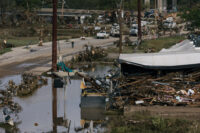
A person rides their bike through the River Arts District in Asheville, NC on Tuesday, Oct. 1, 2024.
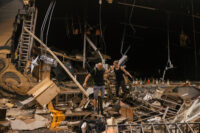
People survey the damage in the River Arts district in Asheville, NC on Oct. 1, 2024
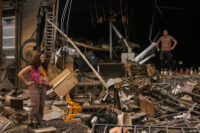
People survey the damage in the River Arts district in Asheville, NC on Oct. 1, 2024
Podcast transcript Here
Previous Episode: Martin Broen Next Episode: George Steinmetz
The post Episode 126: Angela Owens (Documentary Photography) first appeared on A Photojournalism Podcast for Everyone.
18 November 2024, 10:29 pm - 39 minutes 18 secondsEpisode 125: Martin Broen (Underwater Photography)
 Martin Broen is an inventor, industrial designer, diver and photographer. He joins us to discuss his amazing photography in his new book Light In The Underworld available from Rizzoli. Who knew there were underwater rivers and cave collections spanning over 200km?! Martin talks about the process of exploration, the gear and we try to understand how you can get up the nerve to swim more than an hour into an underwater cave…
Martin Broen is an inventor, industrial designer, diver and photographer. He joins us to discuss his amazing photography in his new book Light In The Underworld available from Rizzoli. Who knew there were underwater rivers and cave collections spanning over 200km?! Martin talks about the process of exploration, the gear and we try to understand how you can get up the nerve to swim more than an hour into an underwater cave…Originally from Argentina, now living in New York, Martin’s photographic works have graced the pages of numerous magazines and newspapers and have been showcased in various exhibitions, earning him a collection of over 50 distinct photography awards. Notable among these accolades are the 2022 Nature Discovery of the Year, 2022 Speleophotography Grand Prize, 2022 Black & White Photo of the Year, 2022 Current World Archeology Winner, 2022 Landscape Photograph of the Year, 2022 and 2023 Underwater imaging best of show, 2021 Oceanographic Exploration Photographer of the Year, among others. One look into his book will show you why.
Previous Episode: Paula Pastrana Next Episode: Angela Owens
The post Episode 125: Martin Broen (Underwater Photography) first appeared on A Photojournalism Podcast for Everyone.
5 November 2024, 7:39 pm - 39 minutes 28 secondsEpisode 124: Paula Pastrana (Documentary Photography)
Today’s guest Paula Pastrana found her way to photography through an unusual route… from professional soccer to documenting strikes and political protest in her native Colombia. Paula studied Photography and Digital Image with a different eye. Her experience with sports and desire to remain true to her own vision led her to a unique style. She has worked in a broad selection of professional photography from sports & fashion, to documentary & portraiture. Currently working on her Masters in Documentary Photography with LABASAD Barcelona, Paula is here today to discuss the work she did capturing the struggles of striking Colombians and the police attacks on them. She has had exhibitions such as Tropicalia, Dendrofilia, Brujería, Miche, Casa Amarilla and individual exhibitions with Eco, publications in the digital magazine Ikebana Magazine and Revista Magazine. We are thrilled to feature this up and coming talent and encourage you to follow her work!
Previous Episode: Peter Essick Next Episode: Martin Broen
The post Episode 124: Paula Pastrana (Documentary Photography) first appeared on A Photojournalism Podcast for Everyone.
29 October 2024, 10:26 pm - 39 minutes 46 secondsEpisode 43: Peter Manseau (Ghost Photography)
ARCHIVE EPISODE: Happy Halloween!
Peter Manseau is a novelist, historian, and museum curator. He is the founding director of the Smithsonian National Museum of American History’s Center for the Understanding of Religion in American History. We explore his book The Apparitionists explores the history of “Spirit photographer” William Mumler and his photos capturing the ghostly presence of lost loved ones alongside his living subjects. Among his many supporters was one Mary Todd Lincoln…
Winner of the National Jewish Book Award, the American Library Association’s Sophie Brody Medal for Outstanding Achievement in Jewish Literature, the Ribalow Prize for Fiction, a National Endowment for the Humanities Public Scholar Fellowship, and a National Endowment for the Arts Literature Fellowship, he has also been shortlisted for the Center for Fiction’s First Novel Prize and the Prix Médicis étranger, awarded to the best foreign novel published in France.
Previous Episode: Peter Essick Next Episode: Paula Pastrana
The post Episode 43: Peter Manseau (Ghost Photography) first appeared on A Photojournalism Podcast for Everyone.
23 October 2024, 4:58 am - More Episodes? Get the App
- http://10fps.net
- en-US
Your feedback is valuable to us. Should you encounter any bugs, glitches, lack of functionality or other problems, please email us on [email protected] or join Moon.FM Telegram Group where you can talk directly to the dev team who are happy to answer any queries.
 Around the Lens
Around the Lens
 Photographica
Photographica
 Keep the Channel Open
Keep the Channel Open
 Scenario
Scenario
 A Photographic Life
A Photographic Life
 The Photo Brigade Podcast
The Photo Brigade Podcast